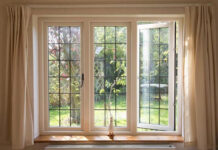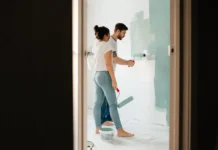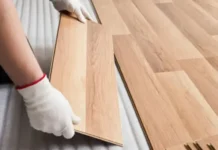Could you have black mold in the bathroom, or in other areas of your home? It’s more likely than you might think.
An estimated 70% of houses contain some type of mold growing within their walls.
While it’s surprisingly common, mold can potentially be very harmful to you and your family. In fact, the CDC recommends treating all mold as harmful, regardless of the type and/or severity of the mold growth. If you do discover it in your home, it’s best to deal with it immediately Penetrating damp services.
Luckily, mold can usually be safely spotted and removed. Depending on the severity of the situation, you may even be able to do it yourself.
But how do you spot black mold and other types of mold? Keep reading to learn how to detect black mold in the bathroom, as well as other types of mold in your home.
What Causes Mold?
Black mold in the bathroom and other types of mold in your home all have one thing in common: they love damp, moist environments. To grow, all they need is a highly humid or persistently wet area, plus an organic material to grow on (such as wood, subfloor, etc). Once mold spores find their ways to these conditions, they immediately start to grow.
How to Identify Black Mold in the Bathroom
In order to spot black mold in the bathroom and in other areas of your home, you should first look for signs of water damage.
Here are some warning signs of black mold in the bathroom:
- A persistent damp, musty, or earthy smell
- Damaged or discolored walls and ceiling
- Soft, squishy, or unstable floor
- Visible mold growth
- Ants in the bathroom
- Damp, slimy surfaces
Know that mold starts growing from the inside, so if you can already see it, then it’s become an urgent problem. Even if you can’t see mold spores, water damage can still indicate that mold is growing beneath the surface.
Preventing Black Mold in the Bathroom
Due to its frequently wet and steamy surfaces, your bathroom is the most susceptible part of your home to mold. If you want to prevent mold from growing in the first place, you will need to monitor any conditions that could lead to mold.
Remove Excess Water
If you don’t want black mold in the bathroom, you have to make sure you don’t leave standing water or wet surfaces.
- Wipe your walls and floors dry after any showers, leaks, or spills
- Use a squeegee after the shower to remove excess water from the walls
- Control your bathroom’s humidity with an air conditioner or dehumidifier if possible
Water is what allows mold spores to grow and thrive. By cleaning up excess water, you can help prevent this from happening.
Maintain Good Air Circulation
Fresh air helps your bathroom to dry quicker and more completely, so it’s a good idea to get the best airflow possible for your bathroom.
- Open your door and windows if you have them
- If possible, let in natural sunlight to the bathroom to help kill mold spores
- Allow your exhaust fan to run while you’re showering to eliminate steam more quickly
- Keep your exhaust fan running until all the steam has cleared after a shower
Black mold in the bathroom starts with damp surfaces and stagnant air. To help prevent the mold from growing, maintaining proper airflow is essential.
Keep Your Bathroom Clean
Dirty, wet, and otherwise unhygienic conditions in the bathroom are the perfect breeding ground for mold. Unfortunately, the more items you have in your bathroom, the greater the chance of mold will be. So, to be on the safe side, try to keep everything clean and free of unnecessary clutter.
- Use disinfectant cleaner on at least a weekly basis to help keep surfaces clean, dry, and germ-free
- Wash rugs, curtains, and other fabric surfaces regularly
- Remove any water and/or residue as soon as possible
By keeping a clean bathroom, you will decrease the chance that mold has to grow.
Look for Plumbing Leaks
Since water is what grows black mold in the bathroom, it’s important to inspect your bathroom for any leaks that could be causing water damage. Check all your pipes and valves to be sure none of them are rusted or broken. You should also look at the seals around the base of your toilet and beneath the sink.
Have a professional plumber fix leaks, perform shower pan leak restoration, and take care of any other plumbing issues that could be causing excess water in the bathroom. This will help you maintain a dry and mold-free bathroom.
Waterproof Your Bathroom
Despite your best efforts, you could still end up with black mold in the bathroom if your walls, tile, and grout aren’t sufficiently waterproofed.
- Use grout sealer around your tiles to waterproof the grout
- Replace cracked tiles or missing grout immediately
- Paint the walls with a semi-gloss or similar easy-to-clean paint
Waterproofing your bathroom will help prevent black mold in the bathroom wall and other situations. By taking care of these issues right away, you can proactively prevent mold before it grows.
Getting Rid of Mold
If you’ve discovered black mold in the bathroom, you may be able to handle the situation yourself. Use a quality fungicide spray to scrub the mold off. Be sure to wear proper protection like goggles, gloves, and a respiratory mask.
You can also seek out a professional mold removal service to help you safely remove the mold in your home. They will help you find the source of the mold, as well as take care of it for good. You may also need to replace damaged walls, tiles, and grout.
Dealing With Mold in Your Home
No one wants to hear that they’ve got mold growing in their home, but the issue is surprisingly common.
You can lessen your chance of growing mold through proper cleaning and maintenance. If you do have mold, there are methods to help you remove it. Now that you know more about black mold in the bathroom and other areas of the home, you’ll be prepared either way.
For more topics, check out our other articles.



































































